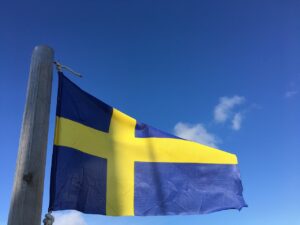In the vibrant tapestry of languages that grace our world, Thai Sign Language (TSL) stands as a testament to the ingenuity and resilience of the human spirit. As a visual-gestural language, TSL serves as the primary means of communication for the Deaf community in Thailand, fostering connections, empowerment, and cultural identity.
A Historical Journey
The roots of TSL trace back to the early 20th century when the first formalized efforts to establish a sign language for the Deaf in Thailand emerged. Influences from American Sign Language (ASL) and other indigenous sign systems amalgamated, giving birth to a unique language that reflected the nuances and cultural richness of Thailand.
TSL continued to evolve, finding its place in education and community settings. Organizations like the Thailand Association of the Deaf (TAD) played pivotal roles in advocating for the recognition and promotion of TSL, further solidifying its status as a language in its own right.
Usage and Community Impact
TSL serves as the primary mode of communication for an estimated 1.2 million Deaf individuals in Thailand, forming the cornerstone of their interactions within the Deaf community. Additionally, it is learned and used by families, educators, and individuals aiming to bridge communication barriers and foster inclusivity.
The language embodies not just words but also encompasses facial expressions, body movements, and space, making it a rich and expressive form of communication. Its significance extends beyond mere words, encapsulating cultural nuances and shared experiences within the Deaf community.
Government Perspective and Recognition
The recognition and support of TSL by the Thai government have undergone significant developments. Efforts have been made to integrate TSL into educational curricula and promote its use in public services, aligning with international conventions advocating for the linguistic rights of the Deaf community.
The government’s recognition of TSL as a legitimate language has marked a positive step towards inclusivity and accessibility for the Deaf population in various spheres of life. However, there are ongoing efforts to further promote and protect the linguistic rights of the Deaf community, ensuring equal opportunities and access to information and services.
Fascinating Insights and Cultural Aspects
- Linguistic Diversity: TSL exhibits regional variations, with distinct signs and dialects in different parts of Thailand, reflecting the country’s diverse cultural landscape.
- Influence of Buddhism: Buddhist teachings and cultural practices have influenced TSL, shaping signs related to religious concepts and rituals.
- Sign Evolution: Just like spoken languages, TSL evolves over time, incorporating new signs influenced by technological advancements and societal changes.
Embracing Diversity through Language
Thai Sign Language serves as a poignant reminder of the beauty of linguistic diversity and the importance of inclusivity. It embodies the resilience of a community striving for recognition, equality, and cultural preservation.
As we navigate a world built on communication, understanding the richness of languages like TSL not only fosters empathy and inclusivity but also enriches our collective tapestry of human experience. It stands not as a language of limitations but as a celebration of the boundless potential of human expression.
In conclusion, the journey of Thai Sign Language reflects a narrative of triumph, resilience, and cultural heritage. Its evolution continues to shape the lives of individuals within the Deaf community, offering a beacon of hope and a testament to the power of language in fostering connections and understanding among us all.



